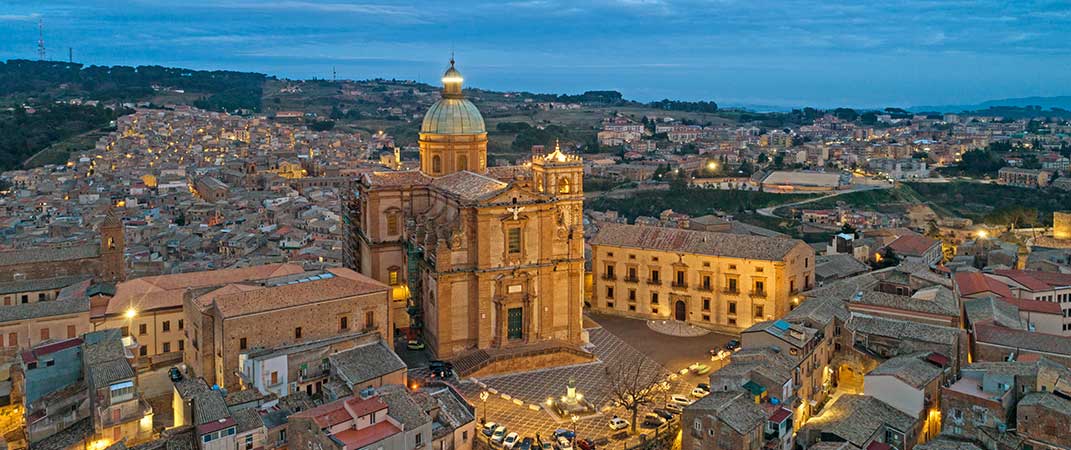
One of the most beautiful municipalities in Italy is located in Sicily, in the province of Enna and it is Piazza Armerina: the village, located on a cliff at 700 m. about high, it is surrounded by the Erei Mountains and, although small, it preserves an incredible historical and artistic heritage.
THEancient Piazza Armerina it was occupied in the past by the Greeks, the Romans and then by the Normans and its enchanting historic center still bears monumental memories to be discovered. It is therefore not surprising that in 1512 the same emperor Charles V came to define Piazza Armerina as a very opulent urbs.
Piazza Armerina: Roman mosaics and archaeological sites
The undisputed symbol of Piazza Armerina is located at the foot of Monte Mangone and it is the Villa Romana del Casale, one of many sites UNESCO heritage of Sicily: it is located in a basin, dates back to the III-IV AD and seems to have been a hunting reserve owned by Massimiliano Erculeo, part of the Roman legion together with Diocletian. Going beyond the monumental entrance you find yourself in extraordinary environments such as the baths, a trichora and the peristyle. The most striking thing about this domus are the mosaics that decorate the rooms, depicting hunting scenes in the Corridor of the Great Hunt, images of daily life, of heroes and divinities. Particularly beautiful are the mosaics showing girls in ancient bikinis, in the act of performing in a show in honor of the sea goddess Teti.
Not far from the Villa Romana del Casale stands the eighteenth-century Villa of Wonders, inside which the private collection of the Cammaratas is kept, with sculptures, paintings, period vases and furniture of great value.
Speaking of archaeological sites, one cannot fail to mention the nearby site of Morgantina, an ancient city founded in the distant 420th century by the Sicilians and then occupied by the Greeks in the 2th century BC. Visiting this little jewel means taking a step back in time, among shops, theater remains, the gymnasium and the agora, overlooking ancient cobblestone streets. The Venus of Morgantina, a colossal sculpture of XNUMX BC more than XNUMX meters high, is preserved Archaeological Museum of Aidone.
Another of the symbols of Piazza Armerina is the Aragonese Castle, built for defensive purposes in the 300s and commissioned by Martino I the Younger: over the course of history it became a prison and the iron windows are there to prove it. The castle is located on top of Monte Mira, dominating the Sicilian village and its historic center, full of churches, palaces such as the Trigona Palace della Floresta, also built in 1690 during the reign of Martino I and seat of the Archaeological Museum of Piazza Armerina.
The most beautiful churches in Piazza Armerina
Among the many unmissable stops in Piazza Armerina is the magnificent one Cathedral of Holy Mary of Victories, dating back to the XVII and built in Baroque style at the highest point of the town, in the heart of the Monte district. Its dome stands out, the highest in all of Sicily and the Catalan-Gothic style bell tower, which flanks the body of the sandstone building. Inside the church is the beautiful altar donated to King Roger by Pope Nicholas II, to thank him for having defeated the Arabs: it is a grandiose work in marble, semi-precious stones and lapis lazuli.
Among the many churches in Piazza Armerina, the Commandery of the Knights of Malta dating back to the 1420th century: in essence it is nothing more than the Church of Santa Maria del Soccorso built in Norman style, later donated to the Knights of the Order of the Hospital of Jerusalem and then became a Commenda in XNUMX.
Equally beautiful is the Church of San Rocco, known in Piazza Armerina as I will fund, from the name of the small village that once stood here: it is located in Piazza Garibaldi and was built in the 600s, complete with a gabled façade on which a sundial stands out above a mighty sandstone portal.
Then there is the Church of St. Peter, dating back to the 500th century: also defined as the "Pantheon of Piazza Armerina", it is considered one of the most important religious buildings in the city and, despite appearing sober and almost bare on the outside, inside it reveals an extraordinary artistic richness. The coffered ceiling dominates an environment embellished with a large painting attributed to Caravaggio or in any case to his school.
Piazza Armerina cannot fail to be included as an unmissable stop on a journey to discover Sicily. The town satisfies all those who have a passion for art and more ancient history and the Roman mosaics have been there for centuries to demonstrate how ancient Piazza Armerina is.
© Image by Ludvig14, CC BY-SA 4.0, via Wikimedia Commons









